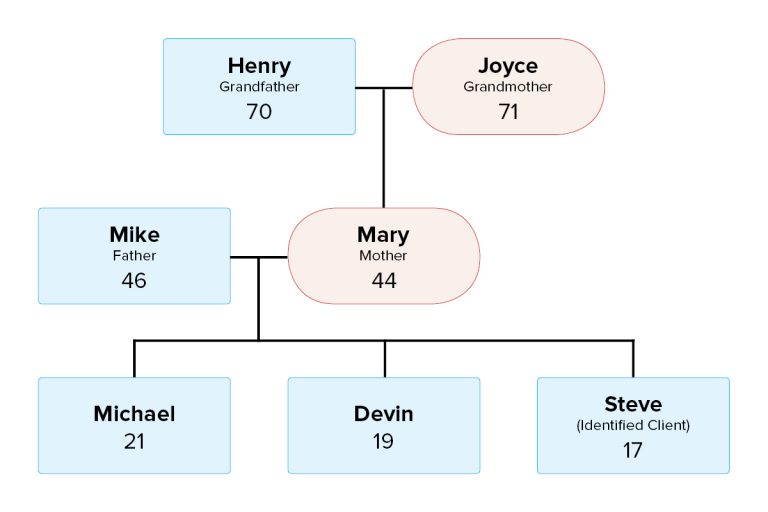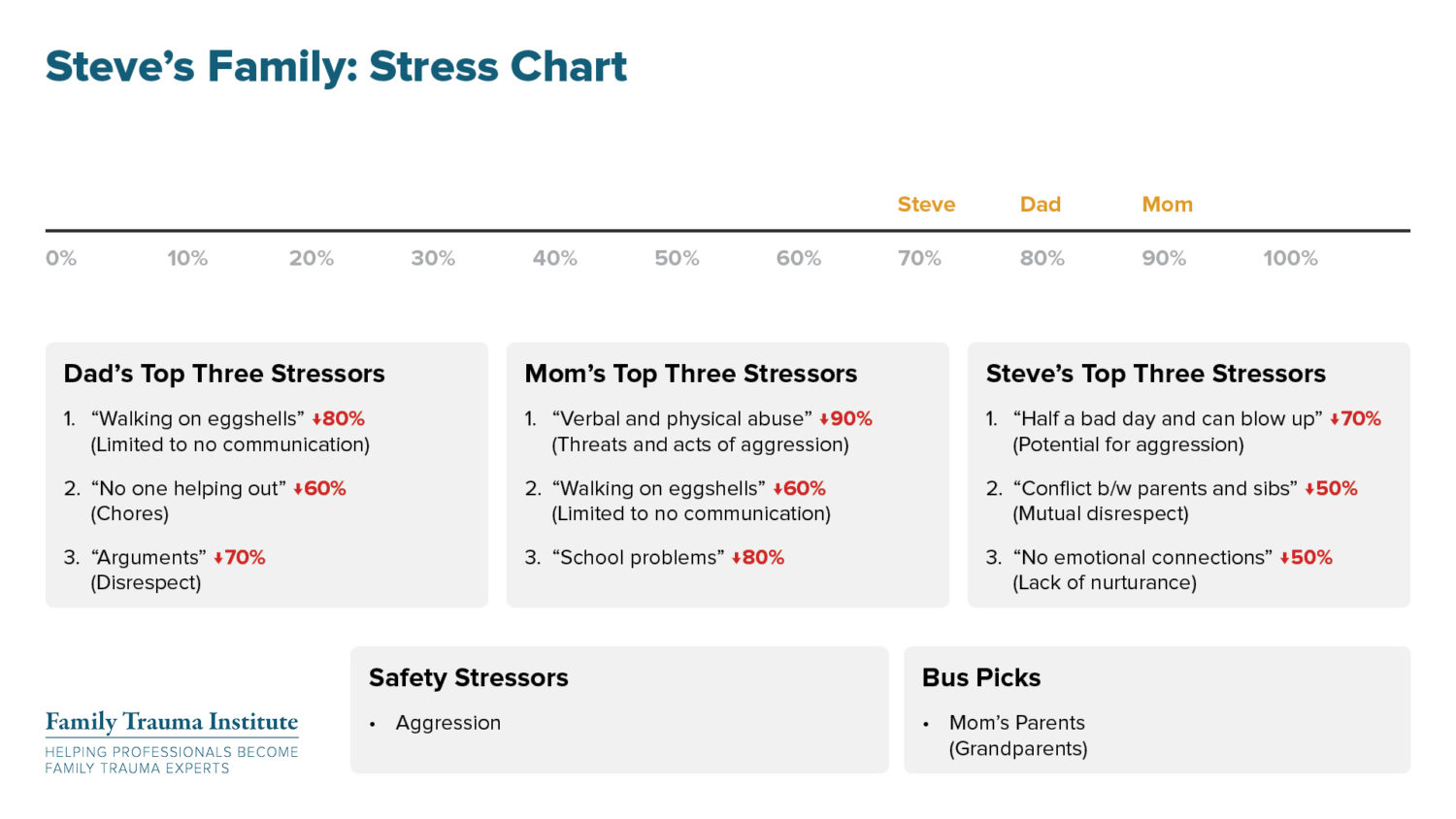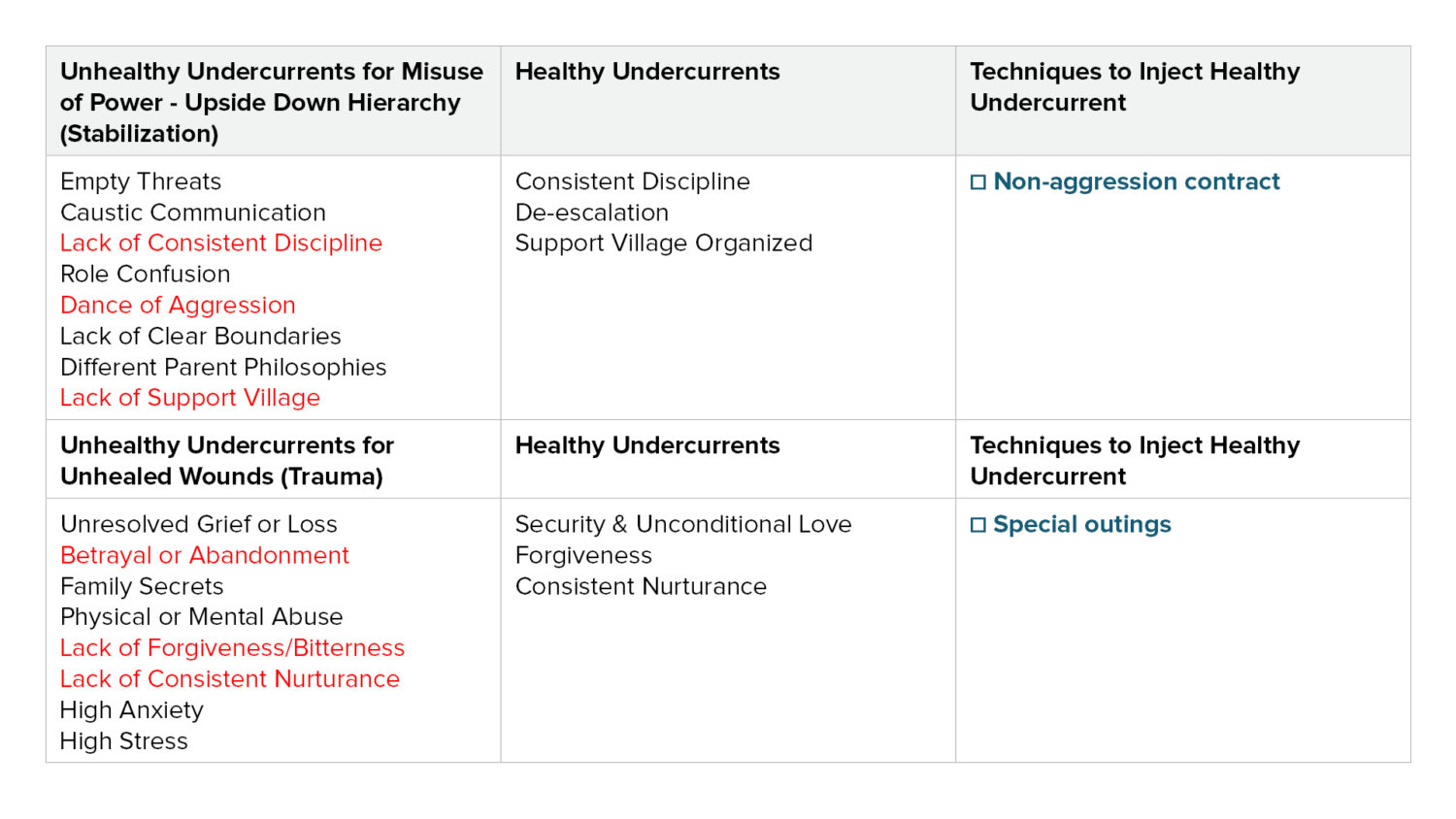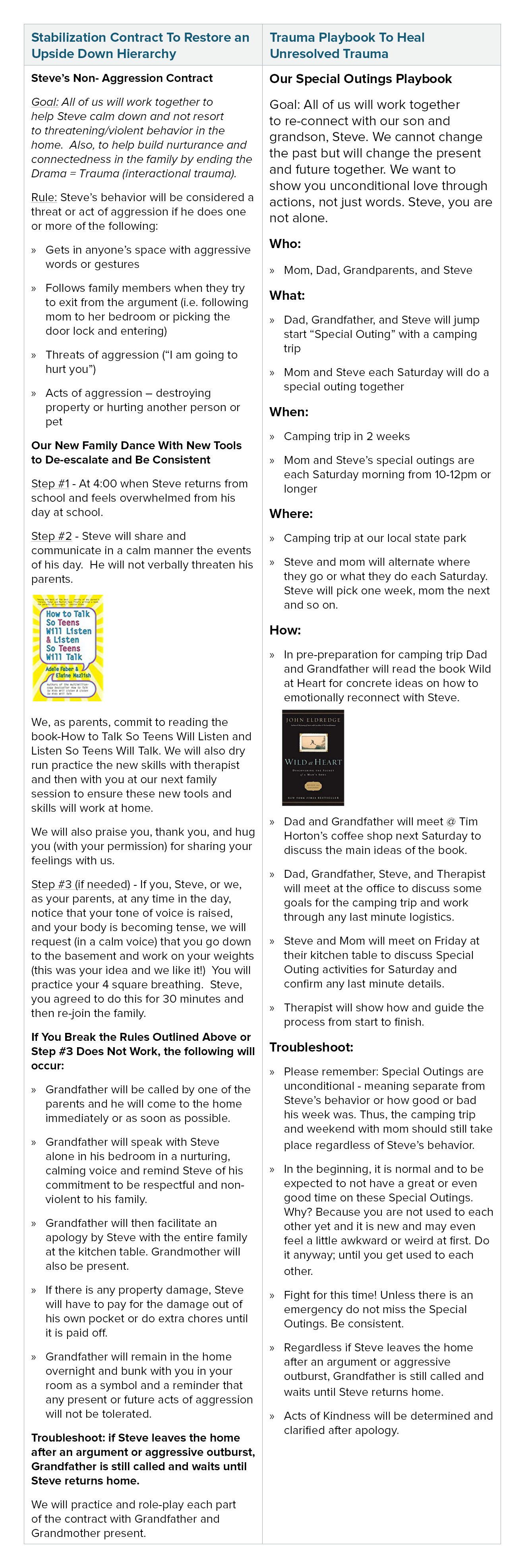Today, many adolescent boys feel emotionally abandoned. In Helping Young Boys Expand Their Emotional Language, Chris Lyford shares how we have redefined what it means to be female, but how we have left boys behind. Too many teenage boys and their parents are trapped in an outdated model of masculinity. Our boys cannot shed this tough-guy persona and allow for moments of tenderness and vulnerability. We don’t have a model of masculinity allowing for fear, grief, tenderness, or the day-to-day sadness that can impact us all.
Parents, especially fathers, were never taught to help their sons identify feelings of vulnerability as “normal” nor how to talk about fear, grief, sadness, and the need for closeness. Boys often learn to talk about sports, the weather, or hunting, not feelings and vulnerability.
As a result, many teenage boys experience a profound sense of loneliness and isolation. Isolation leads to depression which manifests itself as aggression, anxiety, and anger. Electronics, alcohol, or marijuana are often used to hide from or medicate away the pain.
Highlights from This Month’s Playbook
- This month’s playbook highlights the case of 17-year-old Steve and his family.
- When provided with a playbook, Steve’s family quickly grasped his need for a new model of masculinity and they used the new framework to address Steve’s feelings of emotional abandonment.
- I briefly define a “Hybrid Playbook” and illustrate the actual playbook used with Steve’s family.
- My professional reflections are shared in video clips.
Case Study Description
The therapist and I met at a recent conference and she requested a consult on a stuck case. After receiving written consent, I attended a virtual meeting with the family and the therapist.
All identifying information has been removed to provide client confidentiality.

The therapist provided the following information prior to the consultation session:
- Steve is 17 years old and resides with biological parents and older brothers Michael and Devin.
- There is a conflict between Steve and his older brother, Michael, and between Michael and his parents.
- Steve, the identified client, is in treatment due to physical and verbal abuse towards his parents.
- In a recent incident, Steve became verbally abusive with Mom during an argument and she left the room. Mom then went to her bedroom and locked the door. Steve picked the bedroom door lock, pick up an object, and hit Mom in the hand. Afterword, Steve was asked to leave the home and he spent two days with his grandparents. The police were called but charges weren’t filed.
- Counseling was initiated in March 2017. Steve and his family were seen twice a month initially but are now being seen monthly.
- The therapist introduced nurturance strategies (hugs and apologies in the office and at home), psychoeducation on the youth’s fragile sense of self and ADHD diagnosis, and parenting strategies for Mom and Dad to become more consistent and structured. The parents have become more synchronized in their parenting styles, but they are not always consistent.
- Both parents describe themselves as forgiving but they do not realize relationships are still ruptured until there is active work to repair them. Parents are sometimes emotionally reactive, such as when they tell Steve they don’t want him in the home but then change their minds.
Therapist’s Initial Assessment
- “In my opinion, Dr. Sells, Steve has a very fragile sense of self. He feels emotionally abandoned by his parents. His anger appears to be a protection. He is a gifted athlete and shows leadership skills; he is the quarterback of the school football team. He is currently working part-time and helping coach a girl’s flag football team.”
- “The parents love their son but they are not consistent with their nurturance or discipline. They have withdrawn from him emotionally in order to avoid being hurt and to avoid conflict.”
- “Dad’s father passed away when he was young. Because of this, Dad struggles with a clear parenting model. Dad wants to be the ‘perfect dad’ and he worries about his son’s future. He is also committed to protecting his wife.”
- “Mom is caring but her emotional reactions can be excessive. Also, she is scared of Steve because of his verbal and physical threats. Mom has retreated from Steve both physically and emotionally.”
- “At times, I worry about Mom’s mental health due to the high level of stress and anxiety in the home. She has reported not being able to sleep.”
- Mom works at the same high school Steve attends and feels stress when she has to reprimand or be an adult influence with her son at her work.”
Initial Assessment
Stress Chart Technique
The therapist took my recommendation and created a Stress Chart prior to my virtual consultation with the family.
The family completed the Stress Chart below with the assistance of the therapist:

The Stress Chart reveals key diagnostic information (this technique is highlighted in Chapter 5 (pp. 116-130) of Treating the Traumatized Child: A Step-by-Step Family Systems Approach).
Questions were asked such as, “How much overall stress are you under during a bad week at home?” The father answered 80%, Steve said 70%, and Mom reported 90%. And “What are your top three stressors and how much overall stress would be reduced if these stressors were fixed?” Dad, for example, stated that if the issue of communication (walking on eggshells) was resolved, it would reduce his stress down to 0% which would be an 80% reduction.
The following central themes emerged leading to the creation of the playbook and family contract:
Interactional Trauma
- The Stress Chart reveals a common theme of poor communication and years of arguing within the family – “Walk on Egg Shells”, “Verbal and Physical Abuse”, “Arguments”, and “Conflict between Parents and Siblings”.
- It is what we term interactional trauma. Consistent interactional trauma likely caused a loss of attachment or nurturance between Steve and his parents. Over time the traumatic feelings turned into bitterness and fueled his aggression. The tension also prevents Steve’s wounds from healing as the emotional wounds are consistently being reopened.
Solution: A trauma playbook to end the interactional trauma was needed for this family.
Safety First
- Both Mom and Steve reported acts of aggression causing high stress levels for both parties. The entire family also reported aggression was a safety stressor.
Solution: Before active trauma work can take place, stabilization and safety planning must be addressed. In addition, aggression thrives in secrecy and weakens with accountability and boundaries. Therefore, it would be helpful to include the grandparents and create a non-aggression safety plan.
A Lack of Nurturance or Emotional Abandonment Theme
- Interestingly, according to the Stress Chart, Steve is the only one in the family directly stating he has emotional abandonment. However, the byproduct of interactional trauma is that over time it leads to a lack of nurturance. In turn, the emotional distance will emerge in the form of unforgiveness and bitterness. Unforgiveness and offense are the top two causes and maintainers for trauma. Unless these areas can be addressed, trauma will not be healed long term.
Solution: To heal emotional distance within a relationship, a clear, concrete, and typed up trauma playbook is needed along with interventions such as “special outings” to jump-start the emotional connectedness. The family likely does not have the tools yet to connect. Therefore, role-playing is needed to help them talk and connect in a new, improved manner.
Hybrid Trauma Playbook
Based on the information from the stress chart technique and the consult with the family and therapist, a hybrid trauma playbook intervention was recommended.
Hybrids use traditional behavioral contracts used to set clear limits but with the addition of a “lemon twist” that actively heals an identified wound or trauma. The theory here is that the identified child or adolescent with the traumatic wound needs both stabilization and active trauma work simultaneously. The process is analogous to a surgeon trying to remove shrapnel (the wound) before he/she stops the bleeding first (the extreme behaviors). The child’s behaviors entering trauma-informed treatment are often extreme and a safety concern (i.e., threats or acts of suicide, self-harm, aggression, etc.). Hence, these behaviors must be stabilized BEFORE active trauma work is possible.
Please watch as I describe the backstory of how the idea of hybrids came about:
Steve’s presenting problems were ongoing aggression (an extreme behavior safety issue) and the trauma of emotional abandonment by his family. As a result, a hybrid plan is recommended with both an anti-aggression contract with clear boundaries and a trauma playbook providing family members with clear directions (Who?, What?, Where?, When?, and How? format). The playbook clarifies each person’s role and provides a clear roadmap for healing trauma in the here and now.
Rules of Thumb: Stabilization vs. Active Trauma Work
The rule of thumb on how to decide when, you, as the therapist, will choose either (a) stabilization, (b) active trauma work without the need for stabilization, or (c) both stabilization and trauma work at the same time are listed in Chapter 5 in Treating the Traumatized Child: A Step-by-Step Family Systems Approach and are summarized within this worksheet.
The choice for Steve’s family was the hybrid approach because the assessment fit the criteria for Rule of Thumb #2:

Please watch here on how I made this decision with Steve’s family:
Hybrid: Steve’s Anti-Aggression Contract & Connection Playbook
The hybrid plan used with Steve’s family is replicated in Table 2. The family and the therapist (with my assistance) created it together. Please note how we used the Family Systems Trauma (FST) treatment model undercurrents in Table 1 as our compass and roadmap to select the correct intervention. Table 1 was used to help the therapist and family insert the right healthy undercurrents into Steve’s family. A contract or playbook (the strategic directive) was the tool to implement the intervention.
Undercurrents are the key DNA of the FST treatment model that guide the therapist to know what to address in a traumatized family to achieve maximum impact in a relatively short timeframe.
The undercurrents and techniques can be found in Chapter 8 (pp. 213-250) of Treating the Traumatized Child: A Step-by-Step Family Systems Approach.
Table 1: Strategic Directives for Steve’s Family to Insert the Healthy Undercurrent Targeted

Table 2 outlines the non-aggression contract used to stabilize the family with clear “safety first” instructions while inserting the healthy undercurrents of consistent discipline, de-escalation tactics, and the involvement of Steve’s grandparents or a support village. The special outing trauma playbook served as the roadmap to insert the healthy undercurrents of security, forgiveness, and consistent nurturance. Once these undercurrents are firmly in place, Steve’s trauma of emotional disconnectedness can be healed. And so can the trauma or disconnectedness of the parents and grandparents.
Herein lies the beauty and majesty of Family Systems Trauma: As the child’s trauma is healed, the parents and other family members are also healed. And when the whole (the family) is healed versus just one part (the child only), the odds increase exponentially that healing is permanent and sustainable.
Table 2: Steve’s Family Hybrid Stabilization and Trauma Work
Postscript
The therapist reported the following huge positive realignments in the family in only two weeks since the implementation of the hybrid trauma playbook:
- Grandfather and Dad “devoured” the Wild at Heart book and it was a catalyst to healing some of their own wounds as well as drawing them closer together.
- All acts of aggression stopped cold.
- Armed with new tools and role plays, they have shown Steve a new framework for masculinity that includes how to talk about feelings and vulnerabilities. During the process, the parents’ marriage improved as Mike, the father, is using the new tools with his wife, Mary. Their trauma around unforgiveness is also starting to heal.
- Mom reports much greater emotional connectedness with the family and that the special outing with Mom was much better than he expected.
- As of this writing, the camping trip is still a week away. The planning and anticipation of the trip has been bringing people together.
The more organized therapy is, the better the outcomes. And when trauma treatment can move to a systems framework and move from the traumatized child to the traumatized family, change can be far-reaching and permanent. When we viewed the symptoms as a family problem and not just a Steve problem, it indirectly and positively impacted the trauma in both the marriage and in the grandfather and son-in-law relationship.
This case also highlights the need and benefits of expanding one’s therapeutic lens to include the extended family or village. Can you imagine how limiting and different this case would be without the influence and wisdom of Steve’s grandfather? The therapist would lose so much momentum for change.
In addition, as highlighted in the introduction, Steve can now shed his tough-guy persona and allow for moments of tenderness and vulnerability. Steve has a new definition of masculinity that includes emotional connectedness.
Kids and parents will do well if they can. They just need the tools, a concrete plan, and a coach (aka a therapist) to show them how to use these new tools.
Trauma playbooks combined with healthy undercurrents and strategic directives such as special outings are the transformational catalysts to bring about change.
As Levine and Frederick (1997, p. 38) in their book Waking the Tiger: Healing Trauma write:
Contrary to popular belief, trauma can be healed…it can be healed without long hours of therapy; without painful reliving of memories; and without a continuing reliance on medication.
We have only to heal our present symptoms and proceed. A healing moment ripples forward and back, out and about.
Scott P. Sells, Ph.D., MSW, LCSW, LMFT, is the author of three books, Treating the Tough Adolescent: A Family-Based, Step-by-Step Guide (1998), Parenting Your Out-of-Control Teenager: 7 Steps to Reestablish Authority and Reclaim Love (2001), and Treating the Traumatized Child: A Step-by-Step Family Systems Approach (2017). He can be contacted at spsells@familytrauma.com or through LinkedIn.


